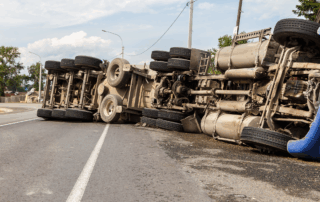WORK SITE SCAFFOLDING SAFETY
The majority of scaffold accidents on the construction site are caused by falls, slipping or being struck by an object from above. All of these accidents can be prevented by taking the proper precautions. Here’s how.
General Safety Tips
- To prevent slipping hazards, conduct a daily routine inspection to ensure all walking and working surfaces are free from potential hazards. If you spot a hazard, remove it.
- Never move, dismantle or alter a scaffold unless under the supervision of a qualified person while doing such activities.
- Never move a scaffold with workers still on it.
- Keep scaffold loads below maximum capacity and remove your equipment when the scaffold is not in use.
- Be alert for bad weather. High winds and driving rain and snow can be dangerous when working at high levels.
Protection for Those Below
- Always hoist up heavy tools, equipment and supplies, rather than carry them up by hand.
- There must be a 3½”-high toeboard to prevent things falling off a scaffold. If things on the scaffold are taller than 3½” (above the toeboard) other systems, like debris nets, must be used to catch falling tools or materials.
- Always wear a hard hat when working on and around a scaffold.
- Never walk under or near the scaffold if roped off when work is being performed above.
Fall Protection Basics
To help protect you against potentially deadly falls, fall protection is needed when working 6 feet or more above a lower level, and consists of either a personal fall arrest system or guardrail systems, depending on the job. If using a fall arrest system, keep the following in mind:
- Always attach your lanyard to a vertical lifeline, horizontal lifeline or scaffold structural member.
- If you are using a vertical lifeline, make sure that you are fastened to a fixed safe point of anchorage, independent of the scaffold. This includes structural members of buildings, but not standpipes, vents, electrical conduit, etc. They may give way under the force of a fall.
- Clean and test your gear regularly, and never tamper with your fall protection system.
When working on scaffolding, your safety is our top priority. Make it yours, too!
About the Author
Share This Story
Related Blogs
OSHA Announces Top 10 Violations for 2025
OSHA recently revealed its top 10 most frequently cited standards in the 2025 fiscal year using preliminary data. This information is valuable for businesses of all kinds, as it helps them identify common exposures that affect their workforce and gives them the information they need to plan their compliance programs.
Cyber Hygiene for Schools: Teaching Digital Safety to Students
Cyber hygiene for schools is more important than ever in today’s digital learning environment. Teaching digital safety to students not only protects their personal information but also strengthens overall school cybersecurity. With increasing online access in classrooms, cyber hygiene for schools must become a routine part of curriculum planning and student behavior expectations.
Mental Health Benefits Go Mainstream: What Employers Need to Know
Once considered a niche offering or a reactive add-on, mental health benefits have now moved to the center of the employee experience. In 2025, nearly half of U.S. employers offer some form of mental health support beyond traditional EAPs—a sharp rise from just 30% in 2023. This shift isn’t just cultural; it’s strategic.








